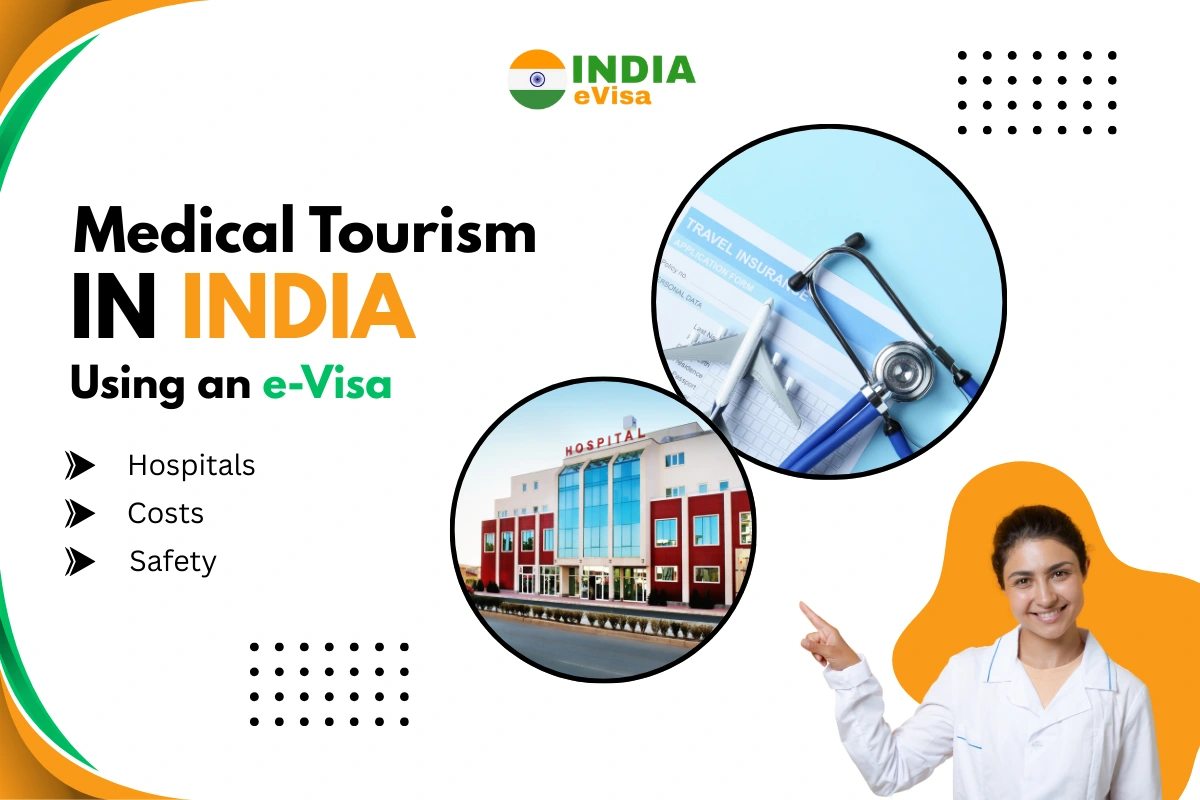Medical Tourism in India Using an e-Visa: Hospitals, Costs, Safety

Medical Tourism in India is growing fast. More and more people are choosing India for medical care because they can get high-quality treatment at much lower cost. In this article I’ll explain hospitals, costs, visas, safety, and what you should plan for — in plain, friendly language. By the time you finish reading, you should have a clear picture of how Medical Tourism in India works and how to prepare for it.
Why choose Medical Tourism in India?
Medical Tourism in India is popular for three simple reasons: skilled doctors, modern hospitals, and much lower prices than many Western countries. India has hospitals with international standards and doctors trained both in India and abroad. For the same operation, patients often pay only a fraction of the cost they would pay in the U.S., UK or other high-cost countries. This big saving, combined with shorter waiting times for surgery, makes India an attractive option.
Which hospitals treat international patients?
If you are thinking about Medical Tourism in India, look for hospitals with a strong track record and an international patient desk. Well-known names include Apollo, Fortis, Medanta, Narayana Health and others. These hospitals often have special teams to help international patients with appointments, language help, and travel logistics. Choosing an accredited hospital is a good way to check quality.
Typical costs — what to expect
Costs vary by city, hospital, and the exact procedure, but India is widely known for large cost savings. For example, heart bypass and major cardiac surgeries can cost a small fraction of prices in Western countries, and knee or hip replacements are often much cheaper too. Always ask the hospital for a written, itemized estimate that lists surgeon fees, hospital stay, medicines, implants (if any), tests, and follow-up visits. That written estimate helps avoid surprise bills later. Recent comparisons show big differences: for some major surgeries patients can save tens of thousands of dollars.
Using an e-Visa for medical travel
Many international patients use India’s e-Visa options for medical travel. India offers e-Visa categories that include e-Medical and e-Medical Attendant for a companion. You can apply online through the official portal — fill the form, upload documents, and wait for approval. After you apply, check your India Visa Online application carefully and keep an eye on your India Visa Status so you know when approval is granted. Depending on your country and the chosen visa category, rules on length of stay and entry points may vary, so follow the official guidance.
Step-by-step planning (practical and safe)
- Talk to the hospital first. Send your medical records and ask for a preliminary treatment plan and timeline.
- Get a written cost estimate. Make sure it covers everything: surgery, implants, hospital stay, medicines, tests, and post-op care.
- Apply for the correct visa. Use the official India visa portal and check your India Visa Status after submission. If you need a companion, apply for the e-Medical Attendant category.
- Book travel and a nearby place to stay. Plan extra days for recovery and possible follow-up checks.
- Prepare documents. Bring original ID, copies of medical records, prescriptions, and emergency contact details.
Safety and realistic expectations
Medical Tourism in India can be safe when you choose the right hospital and doctor. Ask hospitals whether they have NABH or JCI accreditation, how they prevent infections, what ICU support they have, and how many similar procedures the surgeon has done. Ask for patient references or testimonials if possible. Also plan how your home doctor will be kept informed and who will handle complications after you return home. These small steps reduce risk and give you peace of mind.
Travel health, aftercare and support
Bring a family member or friend if you can — they can help during hospital stays and recovery. Many people use the e-Medical Attendant visa so a close person can stay and assist. Before you leave India, get a detailed discharge summary and a clear plan for follow-up. Buy travel insurance that covers your treatment and medical evacuation if needed. Keep all medical papers, prescriptions, and contact details in one folder for easy access.
Real people, real feelings
Medical trips are not only about numbers and procedures — they are about people who are often nervous or hopeful. Many patients say they felt welcomed by caring nurses and staff, and that having clear help from an international patient desk eased their stress. If you can, read patient stories or ask the hospital if you can speak with a former patient. That human side helps you know what to expect emotionally as well as medically.
Quick answers to common concerns
- Can I extend my stay for recovery? Some medical visas allow extension — you may need to contact local authorities or the FRRO/FRRO office to apply.
- How do I check my India Visa Status? Use the official portal where you applied to view your current visa status. Keep a printed copy of the approval (ETA) when you travel.
Final checklist before you travel
- Written treatment plan and cost estimate from the hospital.
- Apply for India Visa Online and confirm India Visa Status is granted.
- Book flights and recovery-friendly accommodation.
- Pack medical records, medicines, and emergency contacts.
- Buy travel insurance that covers medical care and possible repatriation.
Conclusion — short and clear
Medical Tourism in India offers skilled care, modern hospitals, and major cost savings. With careful planning — choosing accredited hospitals, getting a written estimate, applying correctly through India Visa Online, and tracking your India Visa Status — your trip can be smooth and safe. If you want, I can help you draft an email to a hospital’s international patient desk asking for a cost estimate, or I can check a cost estimate you already have and explain it in simple terms.
